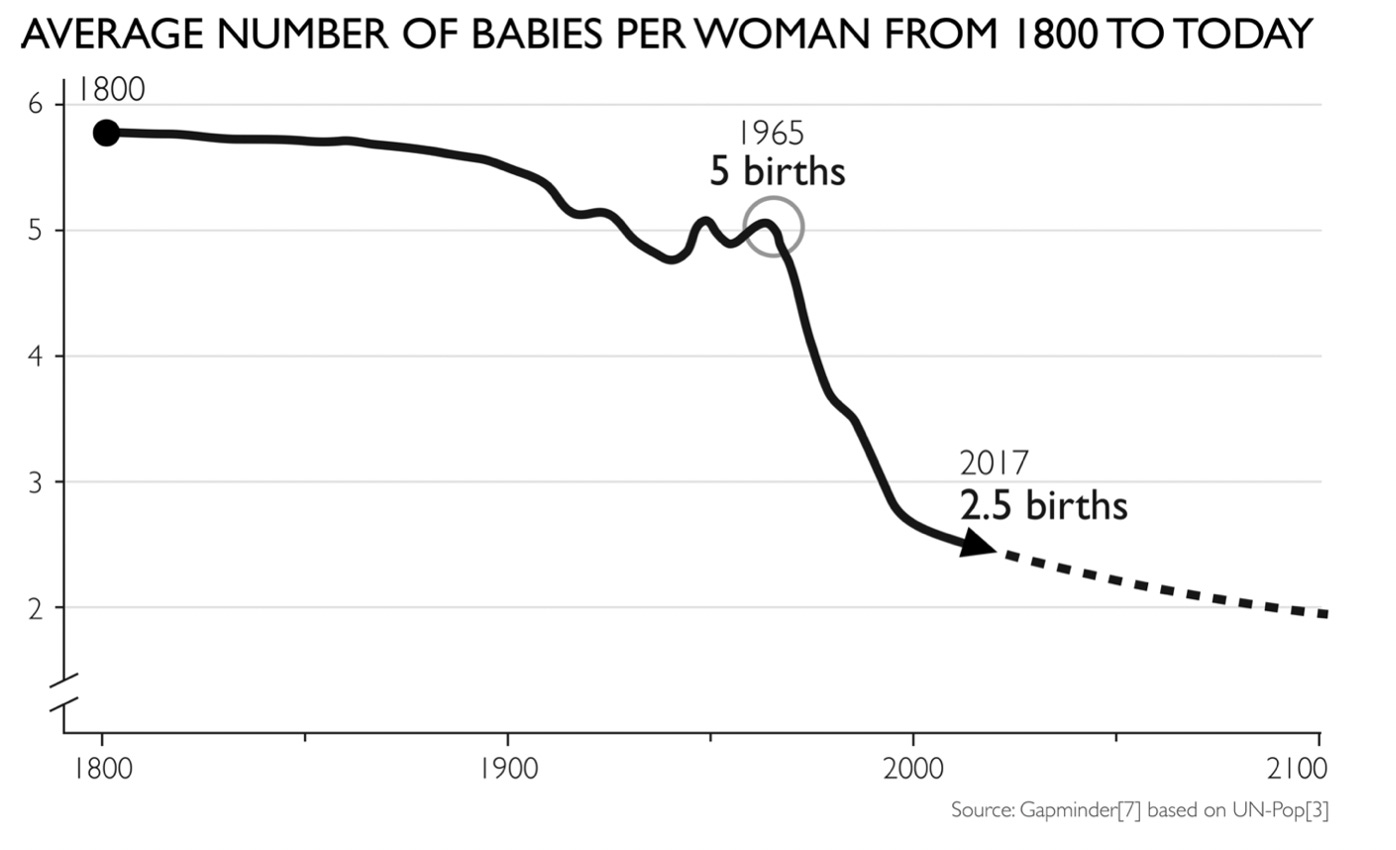CB Session 10 - Persuasion and Influence
Introduction:
In today’s class, we discussed the case of Boosting babies by Dr. Susheela A. Varghese from Singapore Management University. The case goes into great depts to detail similar birth rate problem. Specifically, how Singapore moved from 6 babies per mother to less than 2 in under fifty years. With the current birthrate lower than replacement rate, the aging population in Singapore is likely to have a variety of problems such as stress on pension funds, health care, taxes and economic growth.
For the vast majority of the course so far, we constrained ourselves to general market examples and contexts. However, I thought it may be a good idea for you to understand consumer behaviour from a policy context too. Many of you are likely to join policy institutions and may be invited to talk in forums where similar issues are going to be discussed.
Dissecting the problem:
At one point in time (1960), Singapore used to a child rate of 6 per woman. That implied that every mother had 6 babies. Given that during the time Singapore was just beginning journey towards prosperity, the general feeling was that more population was a bad thing. Other countries too felt this way. For instance, China famously had the one child policy. India too adopted something similar. There were books written about the how the population could be a ticking time bomb (read more about it here: https://en.wikipedia.org/wiki/The_Population_Bomb). Consequently, there were various policies that were implemented based on local cultures and customs. This led to a drastic reduction in the average number of babies that women had. You may find below a chart that shows the rend over the last 200 years from Gapminder, a very reliable provider of demographic panel data.

It is also observed that this fall has been consisted across continents (and countries, barring very few exceptions). There is no denying that many behavioural researchers worked hard on identifying the optimal technique to cause this fall.
Today, we have turned the tables. A falling population could means that there is an increased dependency ratio – i.e. each child has more parents and grandparents (on average) to take care of. This could have economic, and psychological fallouts. Similarly, the GDP growth rate could slow down because there are fewer members to contribute to the economy and consume the products and services that are produced by others. The case by Dr. Vargeese delves into these issues.
The consumer behaviour angle:
Remember we studied the theory of planned behaviour - the theory that tries to help predict behaviour of individuals? The theory basically says that behavioural intentions are shaped jointly by attitude, subjective norms, and perceived behavioural control. Let’s try and understand how ‘citizen consumers’ (the term commonly used in public policy studies that have a marketing twist to it to talk about individuals like us) change their behaviour based on policy decisions made by the State.
The case describes two major behavioural shifts.
The first shift occurred in the 1960s when citizen consumers had a replacement rate of over 6 (meaning for every couple, there were 6 children on average). This was perceived to be a ticking time bomb, and States (including Singapore, China and India) implemented a two (or one) child policy, encouraged families to have fewer children, fostered female labour force participation, legalised abortions, sterilisation, and discouraged individuals from having more children by making it expensive. It may be worthwhile understanding which of these actions pertain to each of the determinants of behaviour, i.e. attitude, subjective norms, and perceived behavioural control.
The second shift however occurred decades later, in around 2010-2020. Here the situation was the opposite. The State wanted to increase the replacement rate while consumer citizens were happy with not having kids due to a variety of factors such as economic prosperity, ability to provide child with better quality of life, better career prospects, etc. In this context too, it may be useful for students to understand how each government action corresponds to the determinants of behaviour.
It may be interesting to note that in the first shift, consumer citizens were aligned with the government in reducing the replacement rate. But in the second shift, consumer citizens are opposed to what the State wants – i.e more tax paying citizens (among other things, of course).
Concluding remarks:
There are a few key take aways from this case.
First, consumers are more likely to change their behaviour when their interests are aligned with the proposed change. You will be able to observe this for a variety of behavioural changes. However, when their interests are not aligned, throwing resources (in the form of incentives, grants etc) at the problem may not yield very positive results.
Second, while the theories of consumer behaviour help us understand how to change consumption patterns over time, these are not like the laws of science. You cannot magically stop changes that are underway and reverse the direction of change, like how many States are attempting now.
Last, marketing need not necessarily be applied only to commercial market transactions. Contexts such as public policy are ripe avenues to apply the concepts that you learn in class. Someday soon, you too would be drafting policy that would influence a large number of people, and when you do that, you can think about the theory of planned behaviour and other theories you learnt in consumer behaviour to make the policy more acceptable to all stakeholders.
Try and explore a few more articles on population control measures that have been implemented in different countries around the world. Here are some that I think you will find interesting:
- https://www.gapminder.org/topics/babies-per-woman/
- https://www.bbc.co.uk/sounds/play/w3cswqtc
- https://www.womensaction.sg/article/family
- https://www.nytimes.com/2011/07/18/world/middleeast/18israel.html
Do have a look, and explore more.
Have a great weekend!
Good night!



